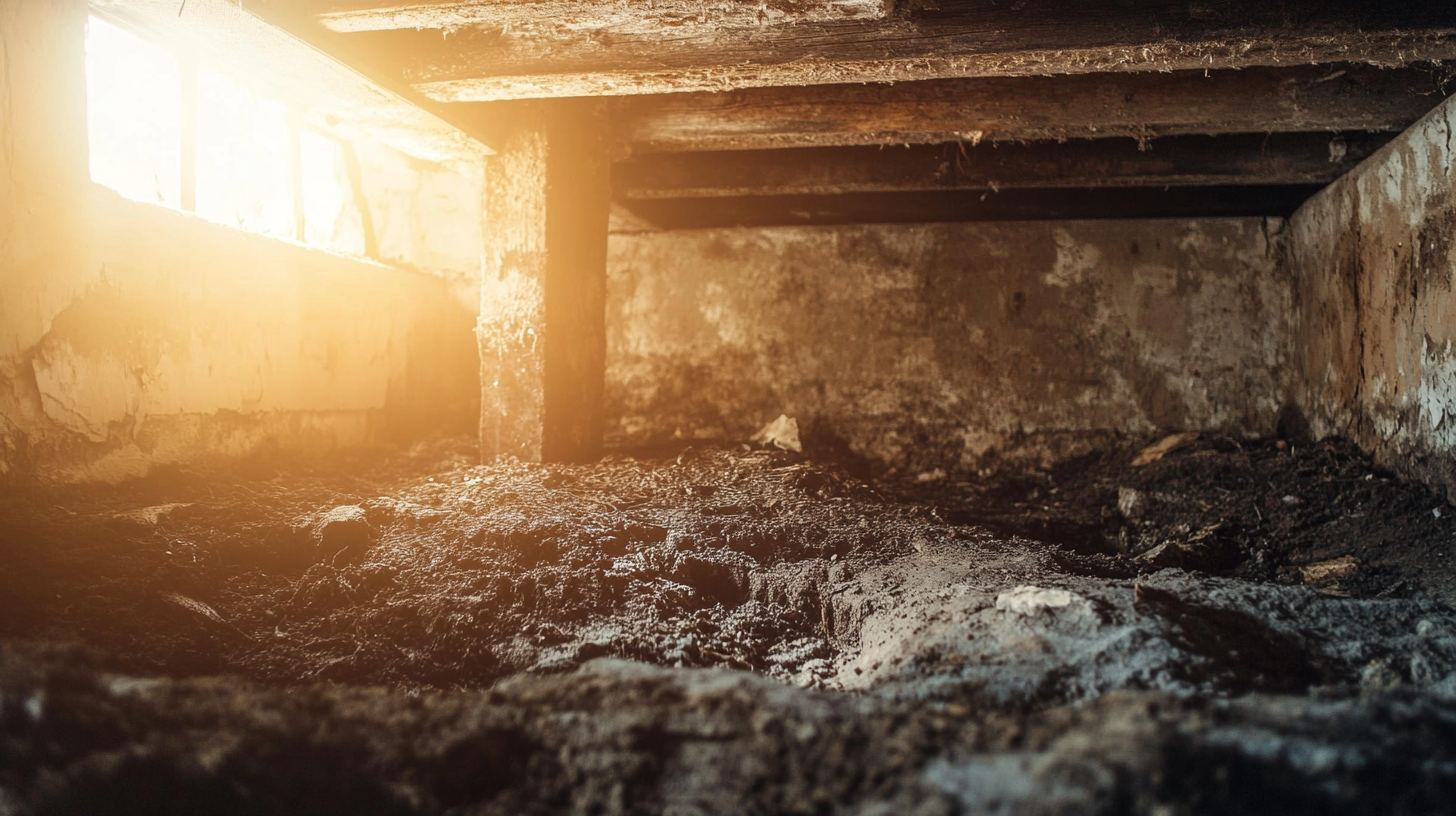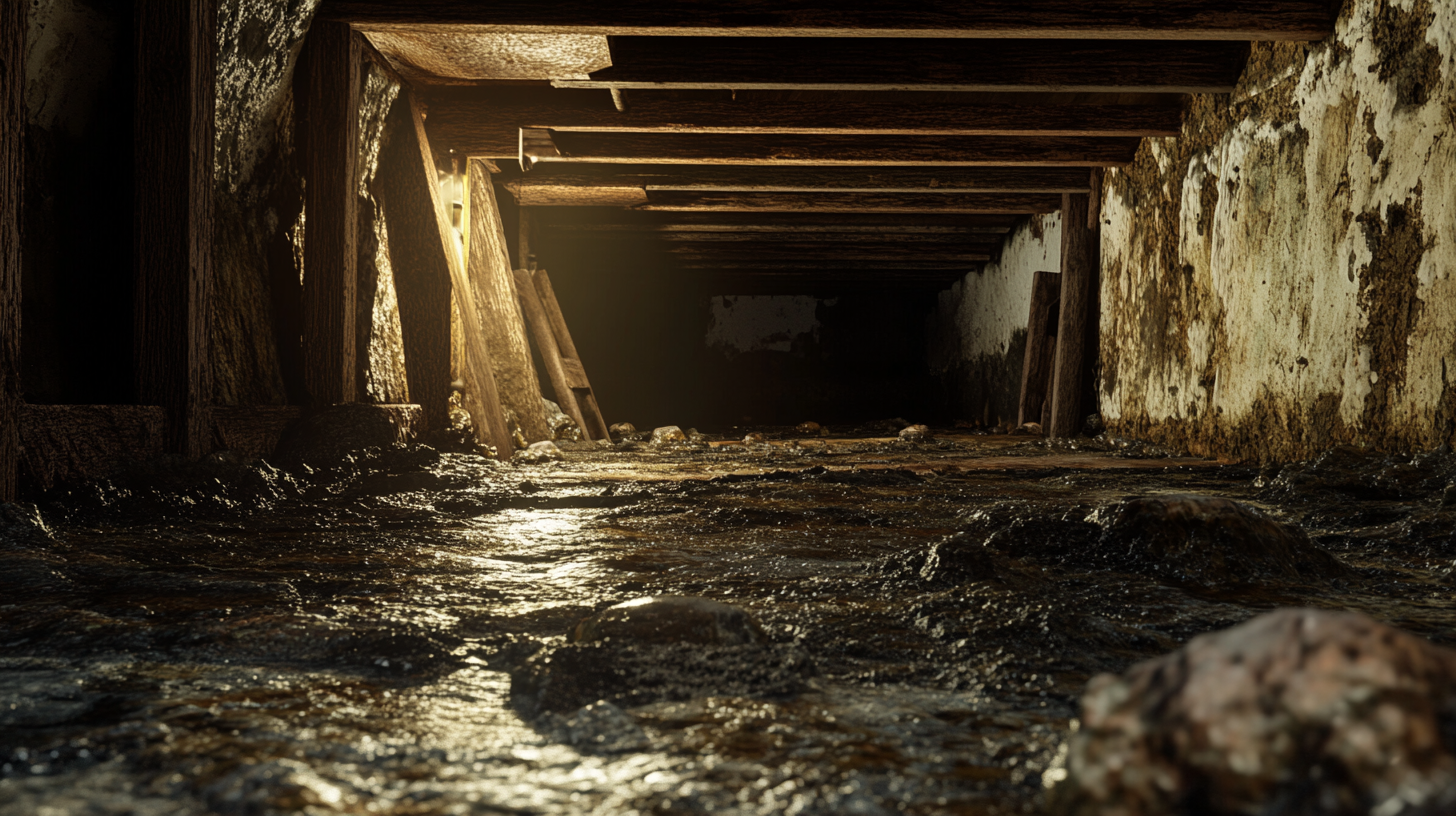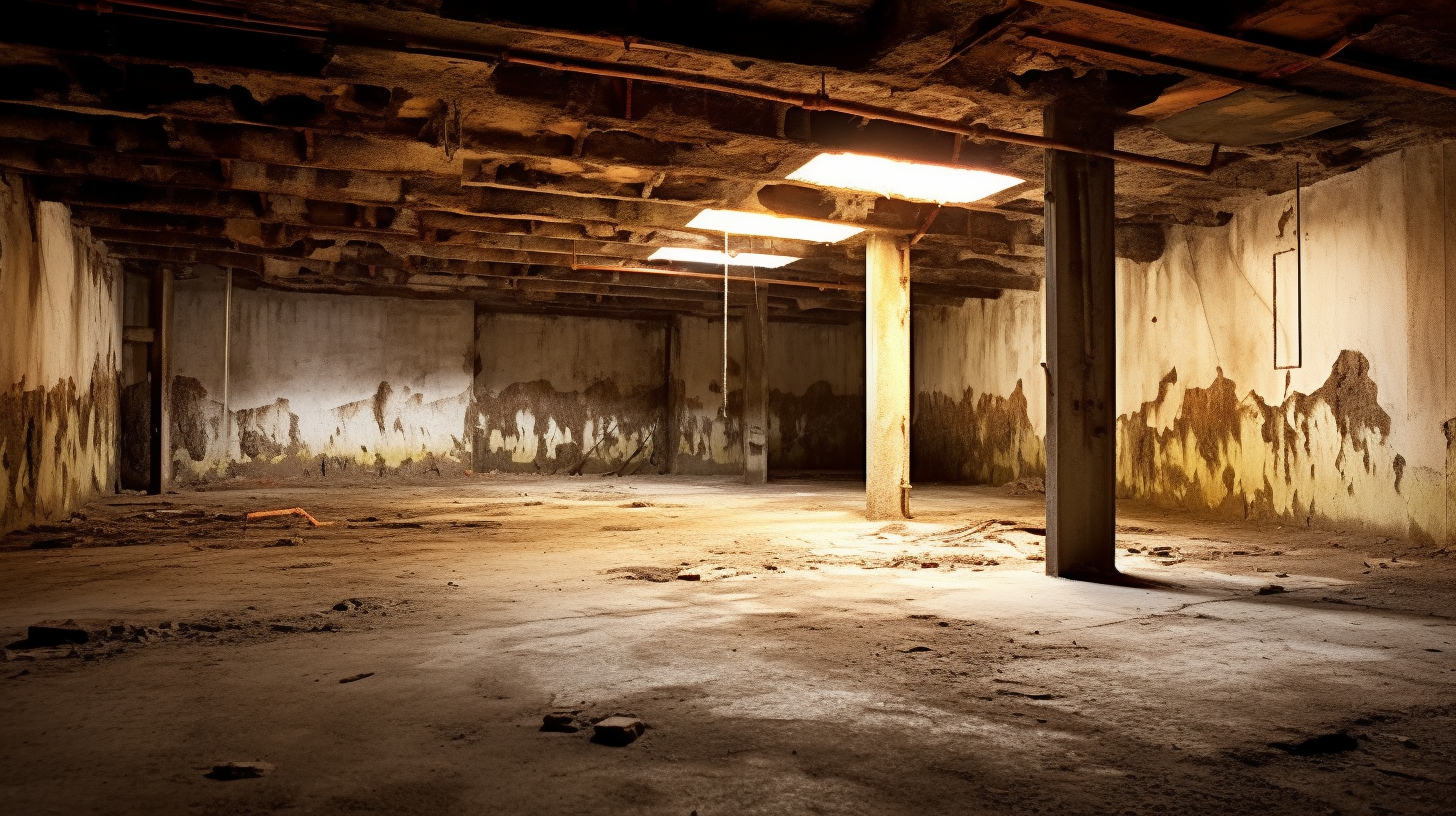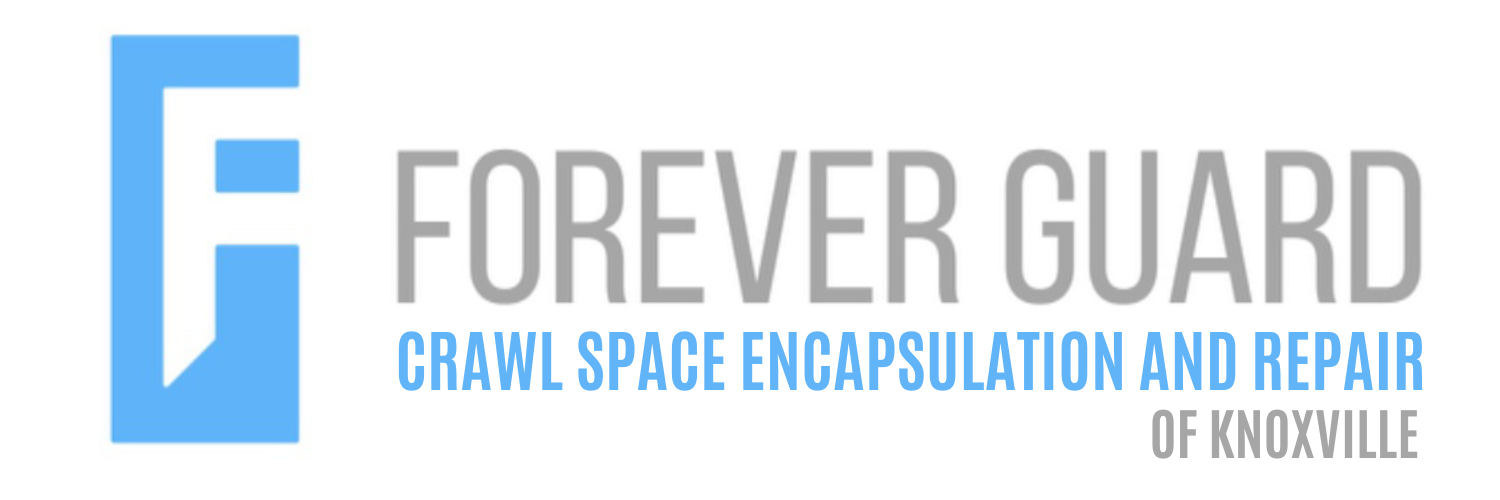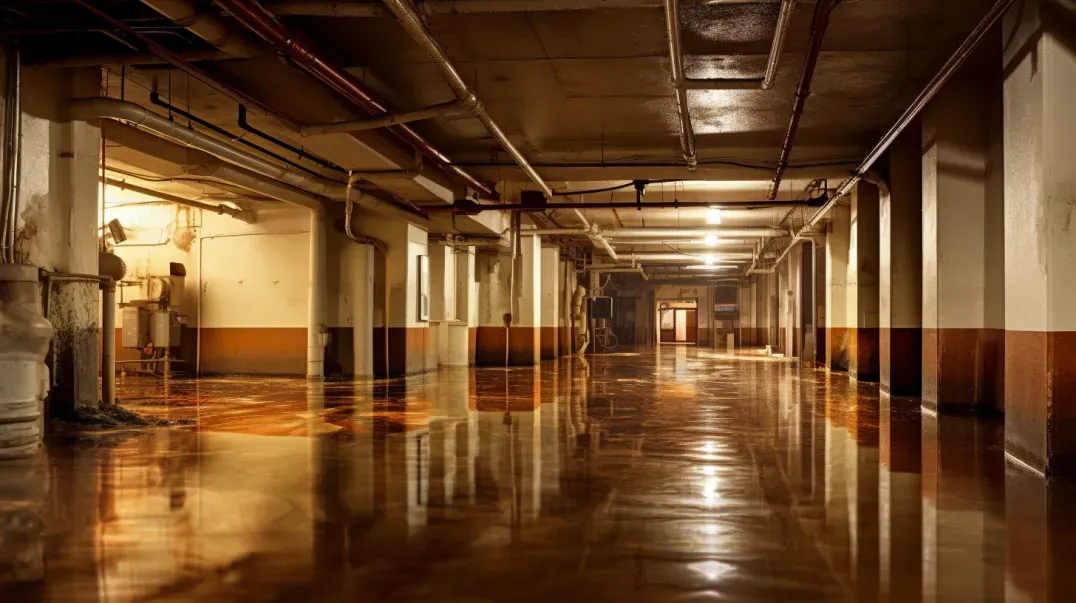Now IS THe Time To...

Crawl Space Services In Knoxville, TN
Stetson Howard: 865-432-6743
CRAWL SPACE ENCAPSULATION, REPAIR, WATERPROOFING & MOLD REMOVAL
No-Obligation, Free Inspections
No-Obligation Free Estimates
We Warranty All of Our Work
100% Satisfaction Guaranteed
In the intricate ballet of home maintenance, where each component plays a pivotal role in ensuring the safety, comfort, and integrity of our living spaces, the sump pump emerges as an unsung hero in the battle against water damage. This blog delves into the vital importance of sump pumps in home water management, exploring how these devices not only protect the structural foundation of our homes but also preserve our peace of mind during adverse weather conditions.
At the heart of a well-orchestrated water management system, the sump pump stands guard in the lowest part of the home, vigilantly monitoring for any signs of unwanted water accumulation. Whether it's from heavy rainfall, melting snow, or rising groundwater levels, excess water is a formidable adversary that can threaten the very foundation of our homes. Here, the sump pump plays a critical role, actively removing water from the sump basin and directing it away from the property, thus preventing potential flooding and the myriad issues that come with it.
Beyond the immediate benefits of mitigating flood risk, sump pumps also contribute to the long-term preservation of your home's structural integrity and indoor air quality. By keeping basements dry, they deter the growth of mold and mildew, protect belongings stored in lower levels, and maintain a healthier living environment for you and your family.
As we navigate the complexities of home maintenance, understanding the importance of sump pumps in home water management is essential. Whether you're a new homeowner or have been in your residence for years, this guide aims to provide valuable insights into the critical role sump pumps play in protecting your home from water-related challenges. Join us as we explore the mechanisms, benefits, and considerations of integrating a sump pump into your home's water management strategy, ensuring your sanctuary remains safe and dry for years to come.
The Role of Building Codes in Sump Pump Installation
Navigating the installation of a sump pump in your home involves more than just selecting the right equipment and preparing the installation site. An often overlooked but crucial aspect of this process is understanding and adhering to the building codes that govern such installations. These regulations play a significant role in ensuring that sump pump systems are installed safely and effectively. This section explores what building codes are and their purpose in construction and home improvement projects, as well as the importance of compliance for safety, legality, and insurance purposes.
What are Building Codes?
Explanation of Building Codes and Their Purpose in Construction and Home Improvement Projects
Building codes are a set of rules and standards established by local, state, or national governing bodies that dictate the requirements for construction, modification, and repairs of buildings and other structures. These codes cover a wide range of considerations, including structural integrity, fire safety, electrical wiring, plumbing, and, pertinent to our discussion, sump pump installation. The primary purpose of building codes is to ensure that buildings are safe, healthy, and durable environments for their occupants. By setting minimum standards for construction practices and materials, building codes help protect the public from potential hazards associated with poorly constructed or maintained structures.
Why Compliance Matters
Discussion on the Importance of Code Compliance for Safety, Legality, and Insurance Purposes
Compliance with building codes is not optional; it's a legal requirement for most construction and home improvement projects, including the installation of sump pumps. Here's why adhering to these codes is essential:
- Safety: First and foremost, compliance with building codes ensures that your sump pump installation meets safety standards designed to protect your home and its occupants from water damage and related hazards.
- Legality: Installing a sump pump without adhering to local building codes can lead to legal issues, including fines and orders to redo the work if it doesn't comply. In some cases, non-compliance can even hinder the sale of a property.
- Insurance: Many homeowners' insurance policies require that all work done on the property complies with local building codes. Non-compliance could result in denied claims or cancellation of your policy, leaving you without coverage in the event of damage.
Common Building Code Requirements for Sump Pumps
Ensuring the proper installation of a sump pump is not just about enhancing your home's water management system; it's also about adhering to specific building code requirements designed to ensure safety, efficiency, and environmental protection. These regulations can vary significantly depending on your location, but there are common themes in the requirements regarding permits and inspections, sump pit specifications, and the discharge location and method. This section provides an overview of these key areas to help homeowners navigate the regulatory landscape and ensure their sump pump installation meets all necessary standards.
Permits and Inspections
Overview of the Typical Permit Application Process and When Inspections Are Required
- Permit Application: Most local jurisdictions require homeowners to obtain a permit before installing a sump pump. This process typically involves submitting detailed plans of the proposed installation for review by local building authorities.
- Inspections: After the installation is complete, an inspection by a building official may be required to ensure the work complies with local codes and the submitted plans. Inspections typically focus on the sump pump's placement, electrical connections (if applicable), and discharge routing.
- Why It Matters: Obtaining the necessary permits and passing inspections are crucial steps in the installation process. They not only ensure compliance with local regulations but also validate that the installation is safe and correctly executed.
Sump Pit Specifications
Common Code Requirements for Sump Pit Size, Location, and Construction
- Size and Depth: Building codes often specify minimum dimensions for the sump pit to ensure it can adequately collect and hold incoming water before pumping it out. Typical requirements might include a pit diameter of 18 inches and a depth of 24 inches, but these can vary.
- Location: The sump pit should be located at the lowest point of the basement or crawl space to effectively collect water. Codes may also dictate how far the pit must be from foundation walls or other structural elements.
- Construction Materials: Regulations may specify the types of materials that can be used for the sump pit liner or basin, such as concrete or durable plastics, to ensure long-term durability and effectiveness.
Discharge Location and Method
Regulations Regarding Where and How Water Can Be Discharged from Sump Pumps
- Discharge Point: Local codes typically require that sump pump discharge is directed away from the property to a suitable drainage area, such as a storm drain or a dry well, and not simply onto the ground where it can re-enter the basement.
- Discharge Method: Codes may dictate the type of piping or hoses used for discharge, as well as requirements for air gaps, check valves, and anti-freezing measures to ensure the system operates effectively throughout the year.
- Environmental Considerations: Some jurisdictions have regulations aimed at protecting local waterways from potential contamination, which can affect where and how you can discharge sump pump water.
Navigating Local Building Codes
Embarking on home improvement projects, especially those involving significant installations like sump pumps, requires more than just technical know-how and the right tools. It also demands a thorough understanding of and compliance with local building codes. These regulations, which can vary widely from one jurisdiction to another, are designed to ensure that all construction work meets established safety, quality, and environmental standards. This section offers practical tips for locating and understanding the building codes relevant to your area and provides guidance on when it might be necessary to consult directly with local building officials.
Finding and Understanding Your Local Codes
Tips for Locating the Building Codes Relevant to Your Area and Understanding the Legal Jargon
- Start Online: Many local government websites provide access to building codes. Look for sections dedicated to residential construction or home improvement projects.
- Visit Your Local Library or City Hall: If online resources are limited, your local library or city hall may have copies of the building codes. Staff there can often help you find what you're looking for.
- Deciphering the Jargon: Building codes can be dense and filled with technical terminology. Don't hesitate to use online resources or reference books to help translate legal and technical jargon into plain language.
- Seek Out Summaries or Guides: Some municipalities offer simplified guides or summaries of building codes for homeowners. These can be invaluable resources for understanding the essentials without getting bogged down in details.
When to Consult with Local Authorities
Guidance on Situations Where It's Advisable to Directly Consult Local Building Officials
- Before Starting Your Project: It's wise to consult with local building officials early in the planning process. They can provide insights into which codes will apply to your project and what permits you may need.
- If You Encounter Ambiguities: If you're unsure how a particular code applies to your project or if you find conflicting information, reaching out to building officials can clarify these uncertainties.
- For Permit Applications: When applying for permits, building officials can guide you through the process, ensuring you submit all necessary documentation and adhere to all relevant codes.
- Complex or Unusual Projects: If your sump pump installation involves unique challenges or if you're integrating it with other significant home improvements, consulting with officials can ensure your project complies with all local regulations.
The Impact of Non-Compliance
Adhering to local building codes is not merely a bureaucratic hurdle; it's a fundamental aspect of responsible homeownership that safeguards the safety, legality, and financial well-being of your property. Non-compliance with these regulations can lead to significant legal and financial consequences, affecting everything from your home insurance to the potential resale value of your property. This section explores the repercussions of failing to comply with local building codes and how such oversights can impact home insurance policies and the future sale of your home.
Potential Legal and Financial Consequences
Discussion on the Repercussions of Failing to Comply with Local Building Codes
Non-compliance with building codes can lead to a range of legal and financial challenges:
- Fines and Penalties: Homeowners may face fines or penalties for non-compliance, which can accumulate over time and lead to substantial financial burdens.
- Mandatory Corrections: Local authorities may require that non-compliant work be corrected, which can involve undoing and redoing work at the homeowner's expense, significantly increasing the project's total cost.
- Legal Liability: In the event of an accident or injury related to non-compliant work, homeowners may be held liable, facing lawsuits and additional financial liabilities.
Implications for Home Insurance and Resale
How Non-Compliance Can Affect Home Insurance Policies and the Future Sale of the Property
The impact of non-compliance extends beyond immediate legal and financial consequences, affecting long-term aspects of homeownership:
- Insurance Policy Violations: Many home insurance policies require that all work on the property complies with local building codes. Non-compliance may lead to denied claims or policy cancellations, leaving homeowners without coverage when they need it most.
- Challenges in Selling the Property: When selling a home, potential buyers and their lenders will often require proof that all work on the property complies with local codes. Non-compliance can delay or derail the sale process, potentially reducing the property's market value.
- Disclosure Requirements: Sellers are typically required to disclose any known issues with the property, including non-compliance with building codes. Failure to disclose such information can lead to legal action from the buyer post-sale.
Professional Installation and Code Compliance
When it comes to installing a sump pump or undertaking any significant home improvement project, the decision to hire a professional can have far-reaching implications for the safety, legality, and efficiency of the work performed. Professional installers bring a wealth of expertise and a commitment to compliance that DIY approaches can seldom match. This section explores the manifold benefits of opting for professional installation services and offers guidance on verifying the credentials of installers to ensure they are fully equipped to meet your project's specific needs and local code requirements.
The Benefits of Hiring a Professional
Advantages of Professional Installation, Including Compliance Assurance and Expertise
Choosing a professional installer for your sump pump comes with several key advantages:
- Expertise and Experience: Professionals possess the technical skills and practical experience necessary to ensure that your sump pump is installed correctly, functioning optimally to protect your home from water damage.
- Code Compliance: A reputable professional will be familiar with the local building codes and regulations, ensuring that your installation adheres to all legal requirements, thereby avoiding potential fines and penalties associated with non-compliance.
- Time and Stress Savings: By entrusting the job to a professional, you save yourself the time and stress of navigating the complexities of installation and code compliance, allowing you to focus on other aspects of home management.
- Warranty and Follow-Up Support: Many professionals offer warranties on their work and are available for follow-up support, providing peace of mind that any future issues will be addressed promptly.
Verifying the Credentials of Installers
Tips for Ensuring That Your Chosen Professional Is Qualified and Knowledgeable About Local Codes
To ensure that you hire a qualified professional who can deliver on the promise of expert installation and code compliance, consider the following tips:
- Check Licensing and Certification: Verify that the installer is licensed and certified to perform sump pump installations in your area. Licensing requirements vary by location but are a fundamental indicator of the installer's competence and professionalism.
- Ask for References and Reviews: Request references from previous clients and check online reviews to gauge the installer's reputation and the quality of their work. This can provide insights into their reliability and adherence to code compliance.
- Inquire About Code Knowledge: Directly ask potential installers about their familiarity with local building codes relevant to sump pump installation. A reputable professional should be able to discuss how they ensure compliance in their work.
- Ensure Adequate Insurance: Make sure the installer has liability insurance and workers' compensation coverage. This protects you from potential liabilities in the event of accidents or damages during the installation process.
FAQs
Recent Blog Posts
Crawl Space News
